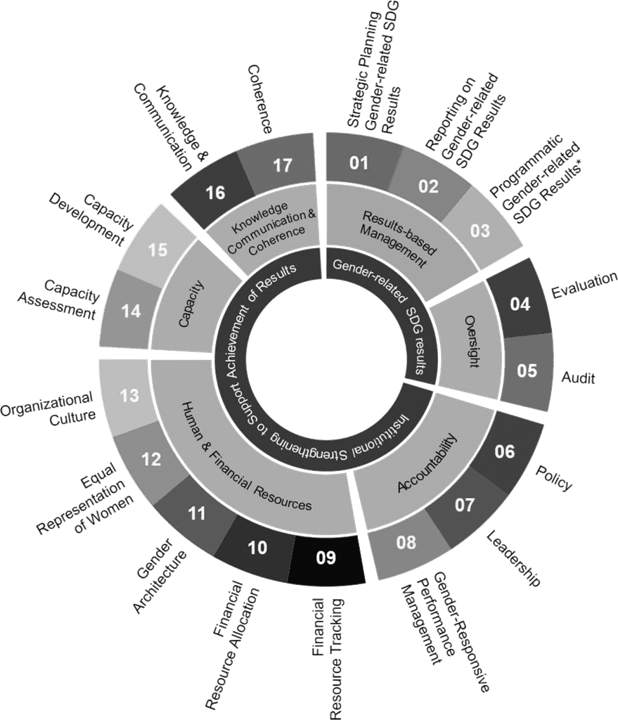Our Global Results
in 78 countries now have a more supportive legislative and policy environment
have strengthened national mechanisms, processes and/or guidelines for the achievement of gender equality, including gender-responsive national reviews, financing assessments and inclusive peacebuilding processes
in 92 countries have increased capacities to safeguard women’s rights, including delivering quality goods, services, and resources for women in humanitarian and development settings
as well as products, tools and initiatives in 73 countries were developed and/or implemented, including innovative financing tools, multi-stakeholder initiatives and platforms for disseminating gender statistics
Global normative frameworks, and gender-responsive laws, policies and institutions
across 39 countries, home to 1.4 billion women and girls were adopted, revised or repealed with UN Women’s support
national and local multi-sectoral policies, strategies and/or plans were adopted in 58 countries, with the potential to benefit 2.6 billion women and girls
in 82 countries have increased capacities to influence gender-responsive legislation, strategies, policies, action plans and/or institutional reforms
Financing for gender equality
in 53 countries now have strengthened capacities to apply newly-obtained knowledge and technical skills to effectively mainstream gender into fiscal laws, policies and standards, in areas including taxation, trade and decentralization
Positive social norms including by engaging men and boys
have adopted comprehensive, coordinated strategies for preventing violence against women, with dedicated focus on transforming inequitable gender norms
Women’s equitable access to services, goods and resources
across 79 countries, including many survivors of violence and internally-displaced women and refugees, accessed information, goods, resources and/or services with support from UN Women
have implemented systems, strategies and/or programmes to advance women’s equal access to and use of services, goods and/or resources (including social protection)
have strengthened protocols, guidelines and initiatives to prevent and respond to violence against women
across 87 countries have enhanced capacities to deliver and/or monitor essential services, goods and resources for women and girls in humanitarian and development settings
Women’s voice, leadership and agency
across 57 countries to civil society organizations working towards the achievement of women’s rights, including through the Spotlight Initiative, the UN Trust Fund to End Violence Against Women (UN Trust Fund), and the Women’s Peace and Humanitarian Fund (WPHF)
or mechanisms, across 84 countries, enhanced leadership capacity and enabled meaningful and safe engagement in decision-making
in 25 countries were developed and implemented to prevent, monitor and mitigate violence against women in politics and public life
Production, analysis and use of gender statistics and sex-disaggregated data
UN Women worked to ensure statistical systems do not turn a blind eye to women, supporting 76 gender statistics/data initiatives to inform policy, programming and budgeting and/or develop national plans and strategies, and 31 countries used the data for policies and programmes
UN system coordination for gender equality
that developed Cooperation Frameworks in 2023 prioritized gender equality (72 per cent in 2022) with UN Women’s support

(73 in 2022) reported on the System-wide Action Plan (UN-SWAP 2.0)
reported on the UNCT-SWAP (76 in 2022) on their gender mainstreaming performance
Organizational efficiency and effectiveness
by UN Women between 2022 and 2023, all directly linked toward the achievement of results for women and girls
received in 2023, outpacing growth in other resources (1.7 per cent) for the second time since 2014
achieved by UN Women effectively leveraging partnerships and communication (188.5 million in 2022)
in 2023, totaling 8,917 signatories in over 160 countries
received from the United Nations Board of Auditors in 2023. Similar to 2022, UN Women in 2023 met both milestones for internal and external audit recommendations, as well as the performance of its enterprise risk policy and framework; demonstrating UN Women’s financial stewardship and operational maturity
Due to recent circumstances experienced by the UN Women office in the State of Palestine, the office’s 2023 results are only partially included in this report, to the extent they could be quality assured.

